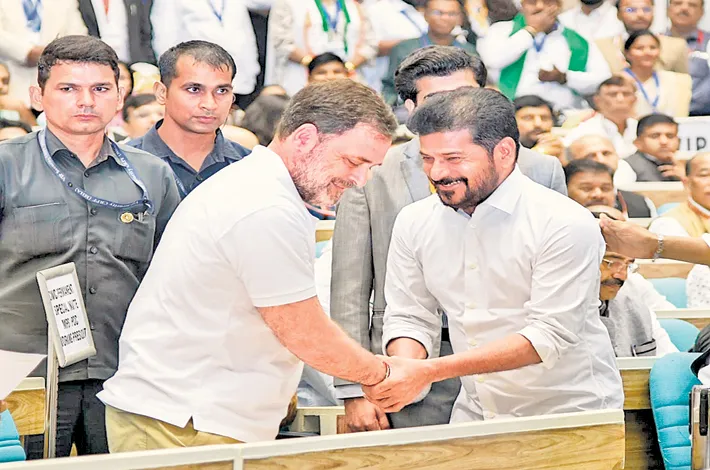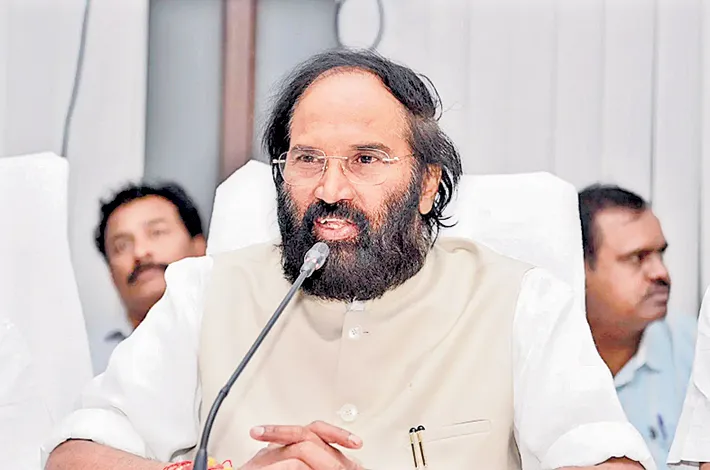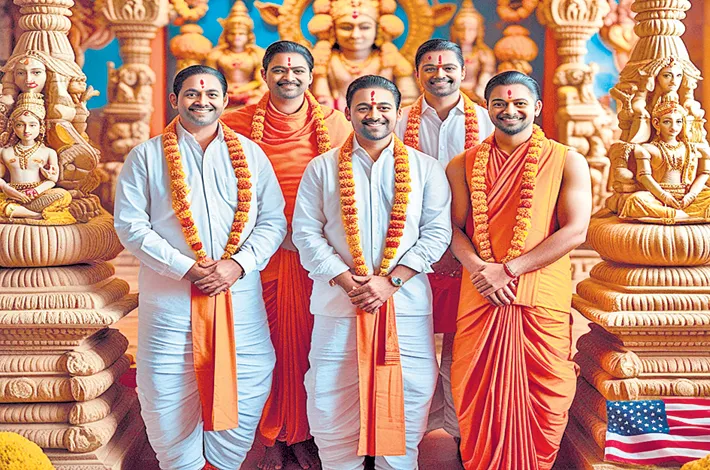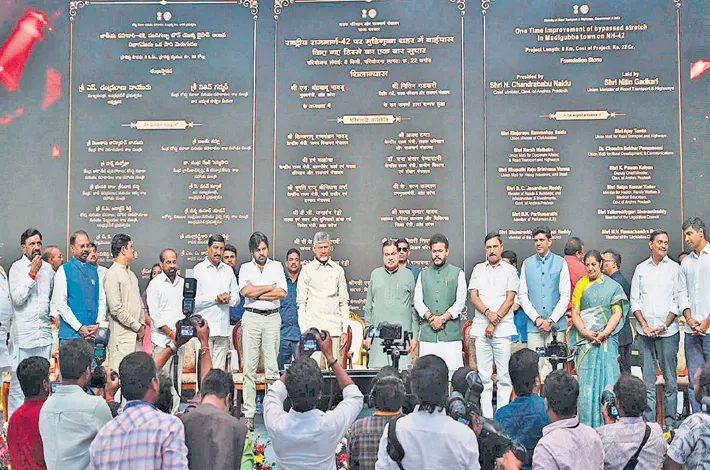Scams that never were
01-05-2025 12:00:00 AM
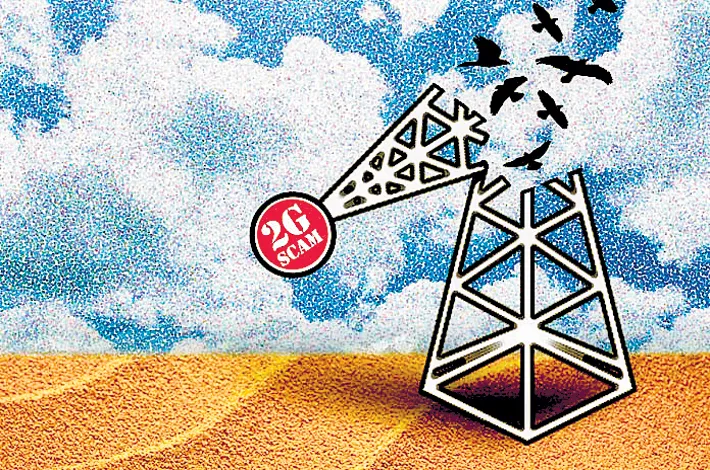
Closure reports on 2G, Coal, CWG, and Vadra Cases which led to fall of UPA and rise of NDA
The 2G spectrum scam, coal allocation scam, CWG scam, and allegations against Robert Vadra were central to the anti-corruption narrative that dominated Indian politics from 2010 to 2014
The recent filing of closure reports by investigating agencies in the 2G spectrum, coal allocation, Commonwealth Games (CWG), and Robert Vadra land deal cases has reignited debate about one of India’s most tumultuous political periods. These reports, stating no evidence of wrongdoing, have cast a shadow over the narrative that toppled the United Progressive Alliance (UPA) government in 2014, paving the way for the Bharatiya Janata Party (BJP)-led National Democratic Alliance (NDA) under Narendra Modi.
The India Against Corruption (IAC) movement, spearheaded by Anna Hazare, Arvind Kejriwal, Kiran Bedi, General V.K. Singh, and others, with alleged backing from the BJP, Rashtriya Swayamsevak Sangh (RSS), and mainstream media, played a pivotal role in this shift. What are the implications of these closures, the political machinations behind the UPA’s fall, and what may lie ahead for India’s political landscape.
The scams that shook a government
The 2G spectrum scam, coal allocation scam, CWG scam, and allegations against Robert Vadra were central to the anti-corruption narrative that dominated Indian politics from 2010 to 2014. The 2G scam, pegged by the Comptroller and Auditor General (CAG) at a presumptive loss of ₹1.76 lakh crore, implicated then-Telecom Minister A. Raja for allegedly manipulating spectrum allocations. The coal scam, dubbed “Coalgate,” suggested a ₹1.86 lakh crore loss due to non-auctioned coal blocks, with fingers pointed at then-Prime Minister Manmohan Singh, who briefly held the coal portfolio.
The CWG scam, involving alleged mismanagement of ₹70,000 crore, tarnished figures like Suresh Kalmadi and Sheila Dikshit. The Vadra land deal, though smaller in scale, accused Congress leader Sonia Gandhi’s son-in-law of illicit gains through property transactions in Haryana.
These allegations, amplified by CAG reports under Vinod Rai, fueled public outrage. The IAC movement, launched in 2011, capitalized on this discontent, demanding a strong Lokpal Bill to combat corruption. Anna Hazare’s hunger strikes at Jantar Mantar and Ramlila Maidan, supported by Kejriwal’s activism, Bedi’s moral authority, and Singh’s military credentials, drew massive crowds.
Mainstream media broadcast these protests relentlessly, while the BJP and RSS, sensing an opportunity, allegedly lent logistical and ideological support. The narrative of a corrupt UPA, led by a “weak” Manmohan Singh, gained traction, culminating in the NDA’s landslide victory in 2014.
Closure Reports: A vindication or too late?
The closure reports filed in 2025 by the Central Bureau of Investigation (CBI) and Enforcement Directorate (ED) mark a significant turn. In the 2G case, a special CBI court acquitted all accused in 2017, citing the prosecution’s failure to prove charges, and subsequent ED investigations found no money laundering. The coal scam saw Manmohan Singh cleared in 2015, with limited convictions of minor officials.
The CWG case, despite initial convictions, collapsed under scrutiny, with the ED recently filing a closure report noting no laundering offenses. The Vadra case, investigated by the CBI, also found no substantive evidence of illegal transactions, with DLF clarifying the deals as legitimate.
These developments have prompted the Congress to claim vindication, arguing that the UPA was unfairly targeted. Congress leaders like Jairam Ramesh and Pawan Khera have demanded apologies from Modi and Kejriwal, accusing them of orchestrating a smear campaign. The closure reports suggest the “scams” were either exaggerated or lacked legal grounding, with CAG’s “presumptive loss” methodology criticized for inflating figures without evidence of actual financial loss. This raises questions about the role of institutions like the CAG and media in shaping public perception.
The IAC’s role and alleged collusion
The IAC movement, while initially appearing grassroots, has faced allegations of being a calculated effort to destabilize the UPA. Congress leaders, including Digvijaya Singh, have long claimed RSS and BJP backing, pointing to the political trajectories of IAC figures. Kejriwal formed the Aam Aadmi Party (AAP), becoming Delhi’s Chief Minister, while Bedi joined the BJP and served as Puducherry’s Lieutenant Governor. General V.K. Singh became a Union Minister, and Hazare retreated to his village, silent on corruption under the NDA. Critics argue this suggests a scripted campaign, with the RSS allegedly providing organizational support and the BJP leveraging the movement to weaken Congress.
Vinod Rai’s 2021 apology to Congress MP Sanjay Nirupam for falsely claiming pressure to exclude Manmohan Singh from the 2G report further fuels these suspicions. Congress alleges Rai, later rewarded with posts under the Modi government, acted as a “conspirator-in-chief.” The media’s role, too, is under scrutiny, with outlets accused of sensationalizing unproven claims to sway public opinion. This narrative paints the IAC as less a people’s movement and more a strategic assault on the UPA, exploiting genuine public frustration with governance.
Political implications and what lies ahead
The closure reports have significant political ramifications. For Congress, they offer a chance to rehabilitate the UPA’s image, particularly Manmohan Singh’s legacy as an honest, if reserved, leader. The party is likely to intensify its attack on the BJP, framing the NDA’s 2014 victory as built on falsehoods. This could resonate in states like Punjab, Haryana, and Delhi, where Congress seeks to regain ground. However, the passage of time may dilute the impact, as public memory of 2014 has faded, and current issues like inflation and unemployment dominate discourse.
For the BJP, the closures pose a challenge but are unlikely to destabilize Modi’s government. The NDA has consolidated power through welfare schemes, Hindutva ideology, and a strong media ecosystem. The BJP may counter by highlighting its anti-corruption measures, like the demonetization drive or GST, and dismissing the closures as irrelevant to current governance. The RSS, a key player in 2014, remains a formidable force, likely to deflect criticism by focusing on cultural nationalism.
Kejriwal and AAP face a trickier path. As a former IAC leader, Kejriwal’s credibility could take a hit, especially in Delhi, where Congress is already capitalizing on the CWG closure to attack him. AAP may pivot to its governance record—free electricity, education reforms—to retain voter loyalty, but its role in the anti-UPA campaign could alienate some supporters.
The closures also raise broader questions about accountability. Will institutions like the CAG face scrutiny for their role? Will the media reflect on its complicity in amplifying unverified claims? Unlikely, given the polarized climate. Instead, the focus may shift to judicial reforms, with calls for faster, more transparent investigations to prevent future political weaponization.
The closure of the 2G, coal, CWG, and Vadra cases exposes the fragility of narratives built on unproven allegations. The IAC movement, while tapping into real public anger, appears to have been co-opted by political forces to dismantle the UPA, ushering in Modi’s NDA. As Congress seeks to reclaim moral ground, the BJP and AAP will likely deflect blame, banking on their current strengths. What happens next depends on whether voters prioritize historical redress or present-day governance. The closures may not topple governments, but they underscore the need for robust institutions to guard against politicized witch-hunts, ensuring truth, not narrative, shapes India’s future.





